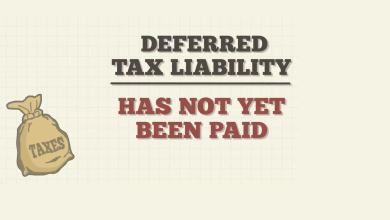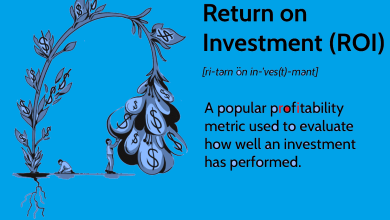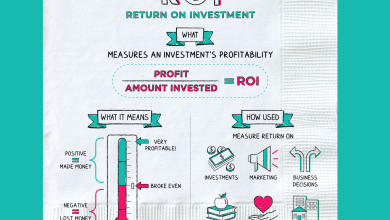Being a finance guy you might have known the term “Financial Modeling”. Do you really know what the term is all about? How a Financial Model is built? No worry at all! We will let you learn the model step by step and make you from a big Zero to a Finance Hero just in 7 Easy Steps!
Financial modeling is, in fact, a very crucial skill in finance, generally done by FPnA function of an organization. This is used to forecast future financial outcome or performance of an organization, evaluate it’s investments in resources, and make well informed business decisions. Before going to detail I would like to emphasize the 3 key considerations for an insightful financial model.
- Simplicity: Keep the model as simple as possible while still achieving its objectives.
- Flexibility: Design the model to be easily updated and adapted to changing circumstances.
- Documentation/Clarity: Clearly document all assumptions, formulas, and methodologies.

7 Easy Steps to the Financial Modeling
We will not make the things complicated to the beginners. We have designed this task in 7 easy steps so that everybody can easily grasp the process. Here’s a breakdown of the major steps involved in the financial modeling:
1. Define Purpose and Scope
- Define the scope and objective: Define the scope and objective of the Financial Model clearly. I mean, the purpose of the model. For example, what the organization will try to to achieve with this financial model. It might be the valuation of the company, budgeting, project feasibility or any other purpose.
- Specific Timeframe: Future is always uncertain. However, every Financial Model has a specific timeframe up to which the projection could be made. So while building the model ask yourself: How far into the future will the projections go?
- The Level of Detail: A model may be a high-level one or a granular level analysis. Based on the purpose and objectives, we should build our Financial Models and determine the level of detail we want.
2. Collect Historical Data
To build a financial modeling we will require some historical data to forecast our future. This comprise some Financial, Operational and Industry Data for comparison.
- Financial statements: Generally we will depend on 3 core FSs to obtain our historical data of the organization. These are past income statements, balance sheets, and cash flow statements.
- Operational data: We will need operational data like sales, production, demography etc. to build the Model. We can refer Income Statements for Sales figures and production costs (CoGS), and customer demographics from the sales system (A/R Customers), etc.
- Industry benchmarks: Research data from comparable companies to understand market trends and market dynamics.
3. Make Assumptions
The assumptions are the foundations of the model. In this step we have to make several assumptions to find the key drivers in financial modeling.
- Key drivers: Identify the factors that most significantly impact the business. We have to assume a number of key drivers to build the model. Sales, EBITDA, Inventory DOH, Receivables DOH, Payables DOH, Capex to Sales, Interest, effective Tax, Dividends growth, cover, payout, and many more drivers. These will act as the guiding lights towards the future.
- Realistic projections: Based on our historical data, industry trends, and management’s expectations, we have to make reasonable assumptions about future performance.
- Documentation: Clearly state and justify each assumption, maintain proper documentation as they are the foundation of the financial model.
4. Build the Model
We are now to build the financial model using some software and applying our already made assumptions.
- Using Spreadsheet software: Generally people use tools like Microsoft Excel or Google Sheets to structure the model.
- Organized layout and color code: We have to create clear sections for inputs, calculations, and outputs. Color coding will be helpful to identify the cells for inputs and for other purposes.
- Linking Formula correctly: We have to carefully link cells with formulas to ensure changes in assumptions automatically update the entire model.
5. Forecast Financial Statements
For financial modeling we use 3 core financial statements for historic metrics. Again, we will forecast the same 3 statements as the output, how they will look some years later, as per our modeling.
- Income statement: Project future revenues, expenses, and profits.
- Balance sheet: Forecast assets, liabilities, and equity.
- Cash flow statement: We have to analyze the cash inflows and outflows of the business.
6. Performance of Analysis
- Ratio analysis: We have to calculate key financial ratios to assess profitability, liquidity, and solvency.
- DuPont Analysis: To measure the operational efficiency. We can also identify the strengths and weaknesses of the business.
- Sensitivity analysis: In order test how changes in assumptions impact the model’s outputs.
- Scenario planning: We have to create different scenarios (optimistic, pessimistic, OR base case, best case and worst case etc.) to understand potential outcomes of the model.
7. Review and Refine
- Accuracy check: Let’s ensure formulas are correct and data is consistent.
- Logic and reasonability: Review the model’s outputs to ensure they make sense.
- Iteration: Refine the model as new information becomes available.
By following these steps, we can create a robust financial model that provides valuable insights for decision-making. We will organize a hands-on training session on Financial Modeling where we will teach how Financial Modeling is professionally done in real world with real data.




